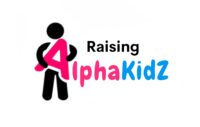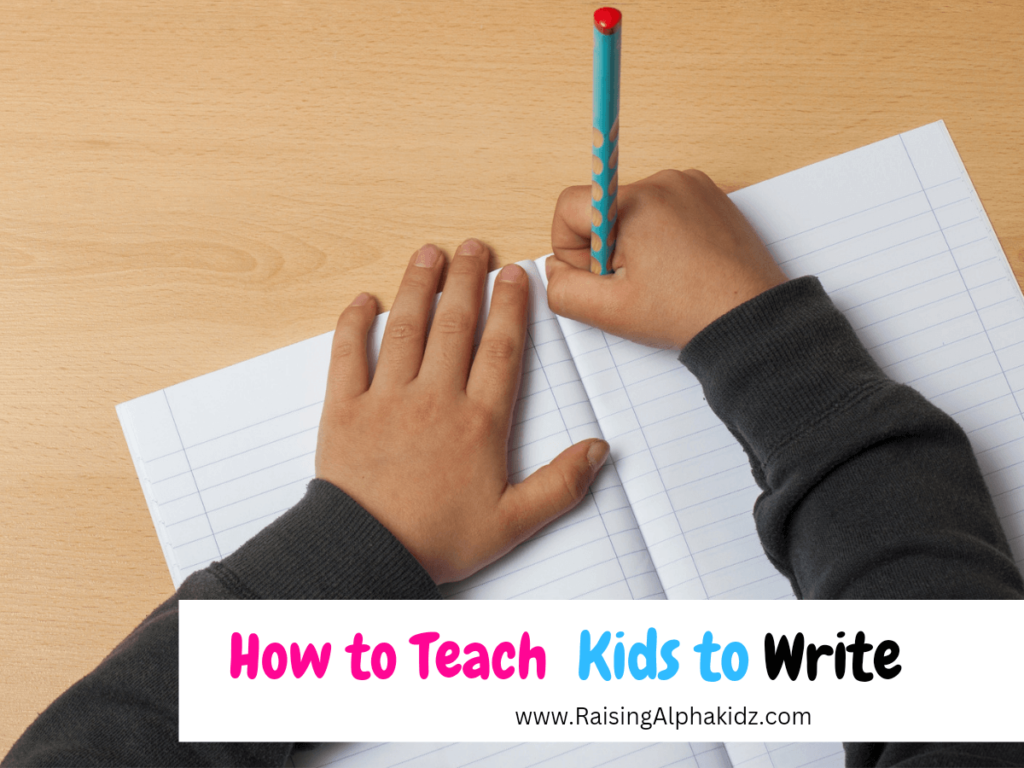As parents and educators, we’re often tasked with nurturing the fundamental skill of writing in children. From the early stages of scribbling to the precise strokes of forming letters and words, each step plays a crucial role in their development. In this comprehensive guide, we’ll delve into innovative methods to teach kids to write and help children master the art of writing.
How To Teach Kids to Write Step By Step
1) Scribble
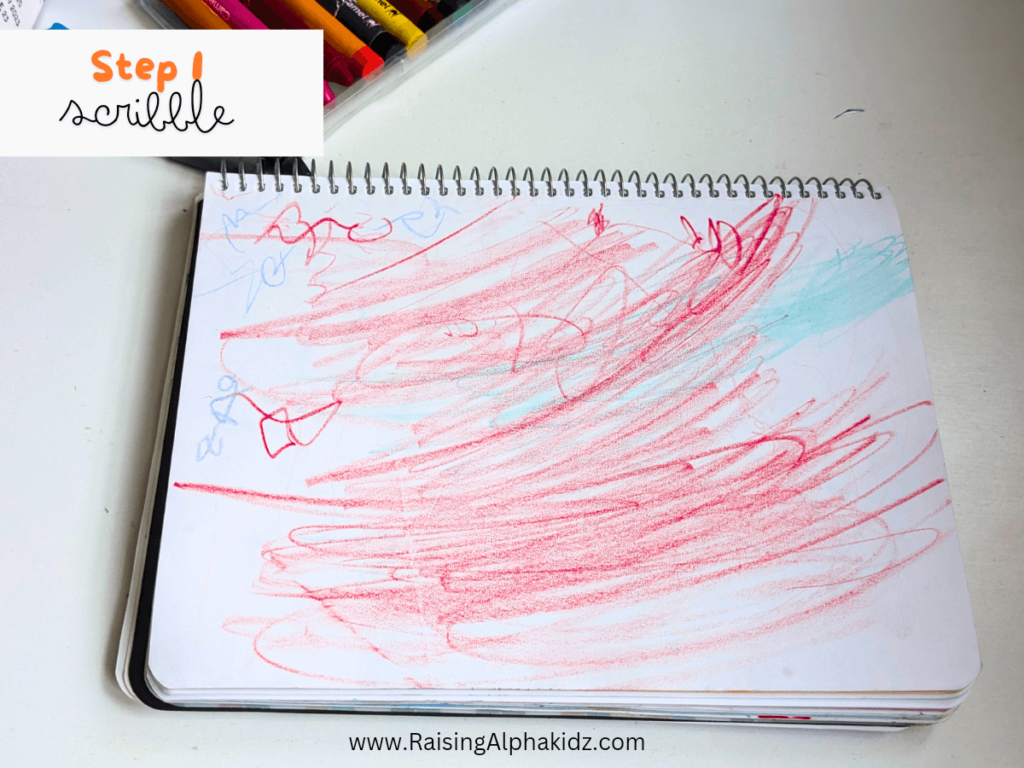
While teaching kids to write, we can’t directly jump into the task of making them write alphabets or numbers on paper. We have to start from scratch by allowing them to scribble. Kids usually start to scribble on their own, and we don’t have to teach them how to scribble. The only thing we can do is to just allow them to scribble. Offer slates, paper, pencils, and anything that helps them to scribble as they wish.
2) Controlled Scribble
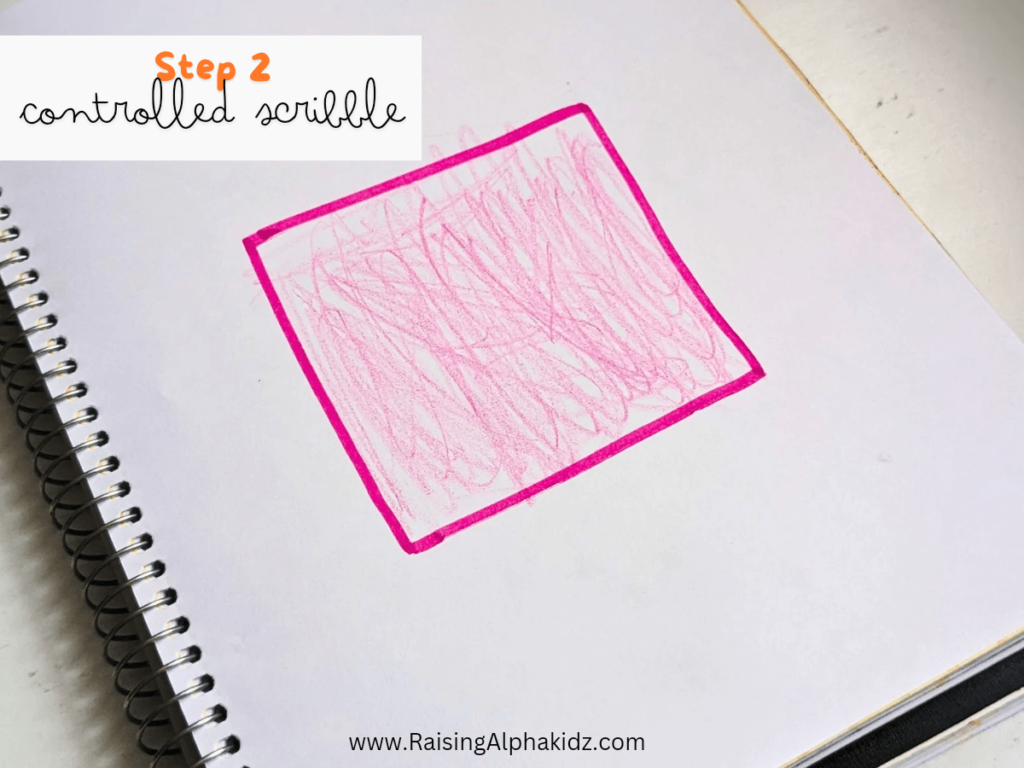
As kids already know how to scribble on their own, our next step is to teach them controlled scribbling. Controlled scribbling involves guiding them to scribble within a confined space, such as within a circle, square, or any geometric or irregular shape. Start by giving them simple geometric shapes to scribble within and gradually introduce more complex structures. Coloring sheets are excellent tools for enhancing controlled scribbling skills while providing a sense of structure and focus.
3) Connect Two Dots:
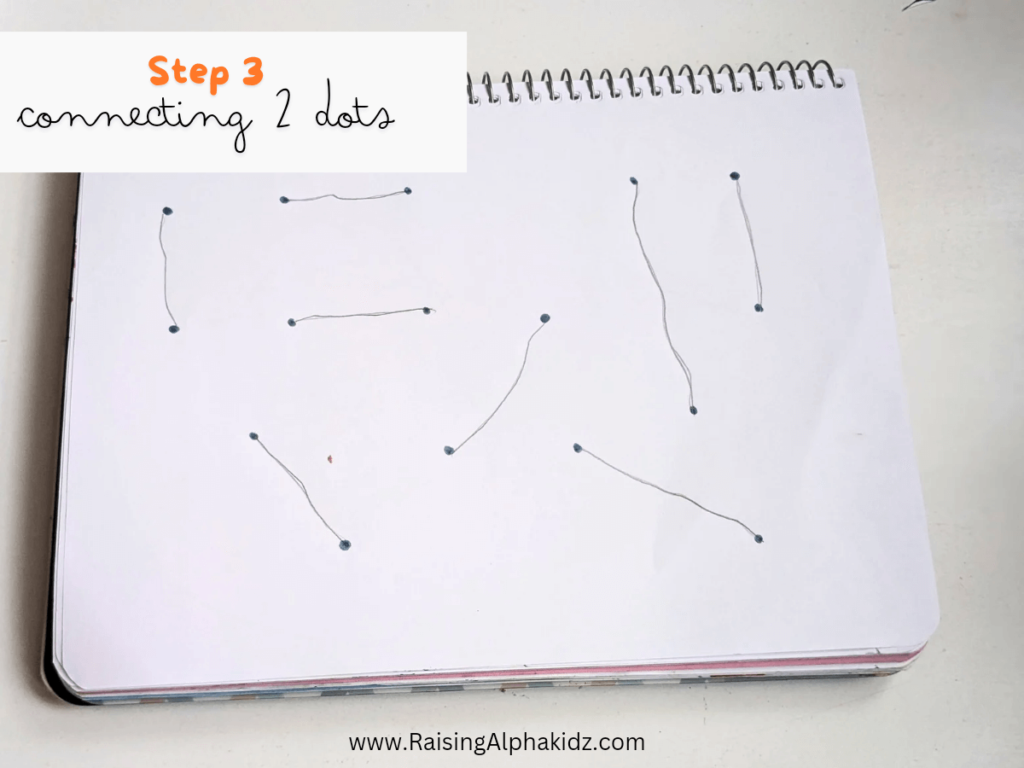
Once they learn to scribble within confined objects, it’s time to refine their skills further by drawing lines connecting two dots. To do this, draw two dots on a notebook and ask your child to join them. This activity promotes hand-eye coordination and spatial awareness. Matching activities, such as pairing fruits with their trees, can further reinforce the skill of drawing lines connecting two points.
4) Connecting Multiple Dots

As the next level, you should make the task more complex by asking them to connect multiple dots in a row. To do this, draw different colored dots on a notebook and challenge your child to connect each dot according to its color, fostering both creativity and cognitive development. Connecting numbered dots to draw pictures adds an element of fun and specialization to the skill.
5) Drawing Lines
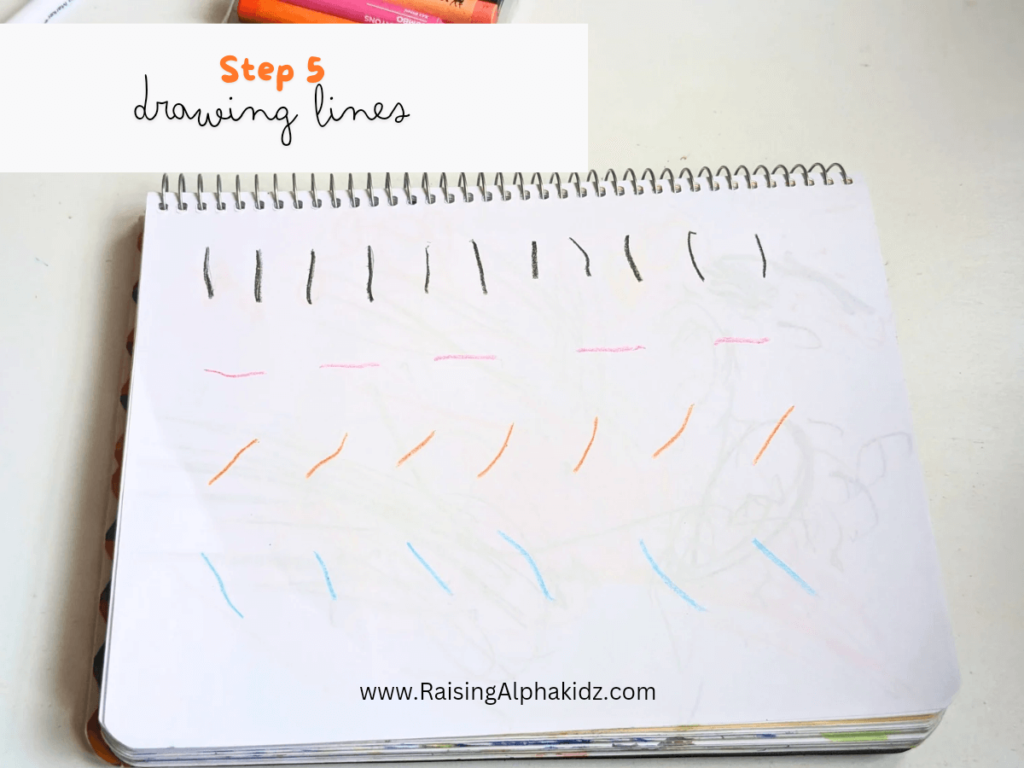
Now, it’s time to move on to drawing a straight lines. Help your child practice drawing various types of straight lines, including slanting, sleeping, and vertical lines on their own, on a notebook. Worksheets featuring connecting dots to construct geometric shapes not only teach about shapes but also reinforce the concept of connecting two points.
6) Drawing Curves
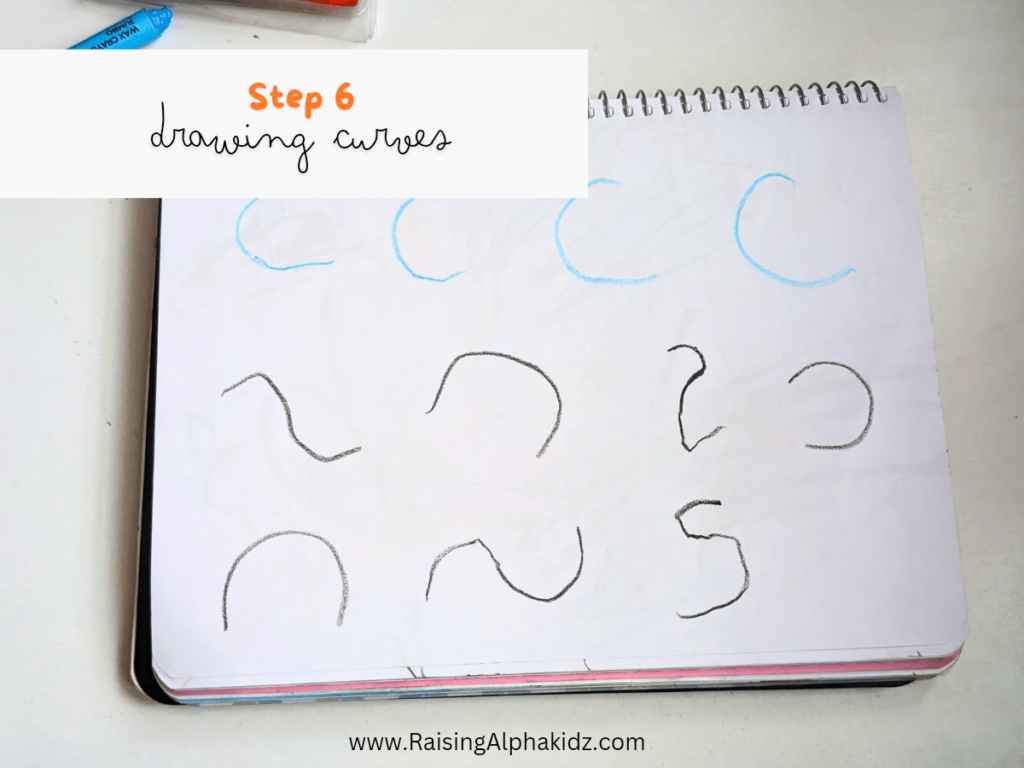
Teach your kids to draw small curved lines on a paper like Alphabets C & U. You can also Engage your child in drawing half of curvy objects like balloons, balls, and flowers to develop their mastery over curves. This activity enhances fine motor skills while encouraging creativity and imagination.
7) Drawing Patterns
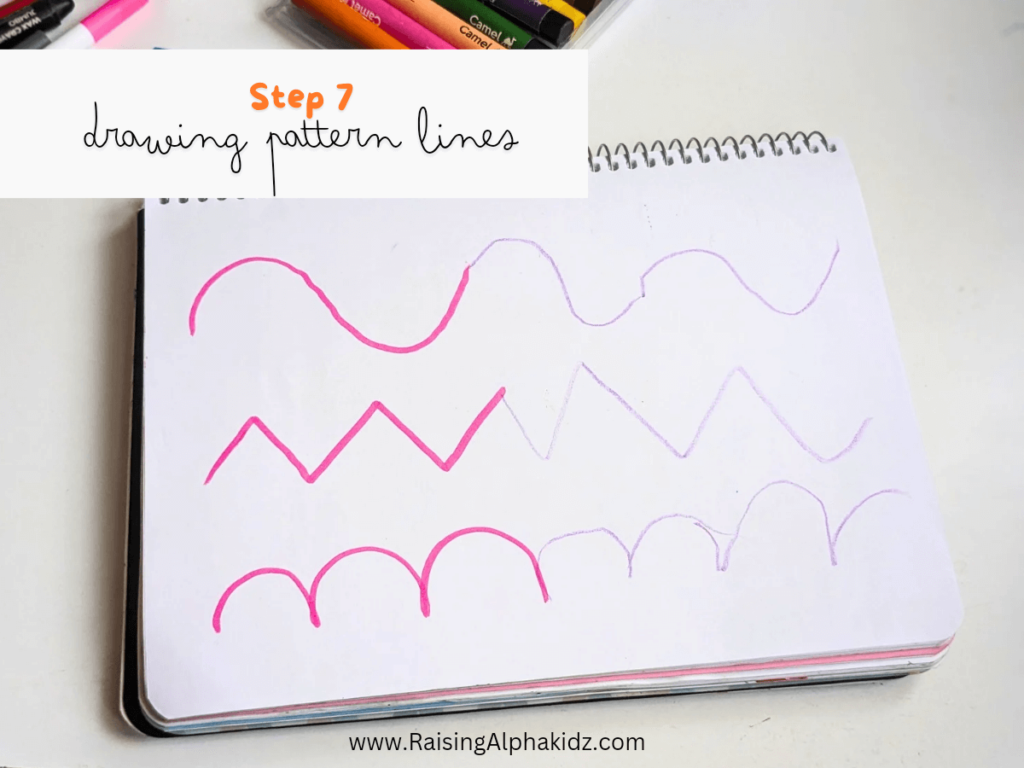
Once they become familiar with drawing straight lines and curved lines on their own, we can then move on to practice pattern lines, which include drawing sinusoidal curves, zigzag lines, and curved lines. To do this, introduce patterns by drawing simple designs on a notebook and challenge your child to replicate them. Worksheets featuring patterned lines between matching objects provide a structured approach to pattern recognition and replication.
8) Writing Line Alphabets
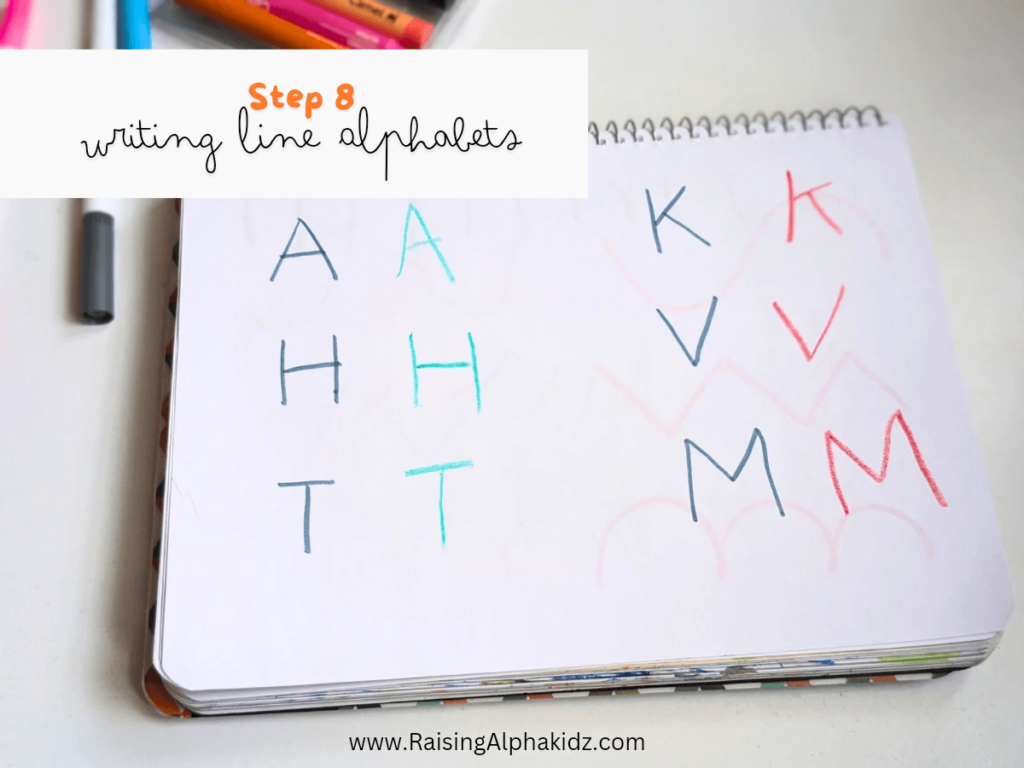
After learning all the above structures, it is the right time to introduce alphabet practice. Begin by guiding your child in tracing capital letters using straight lines, such as A, T, L, and M, which do not involve any complex curved structures. Alphabet tracing worksheets offer systematic practice and reinforcement of letter writing skills.
9) Writing Curvy Alphabets
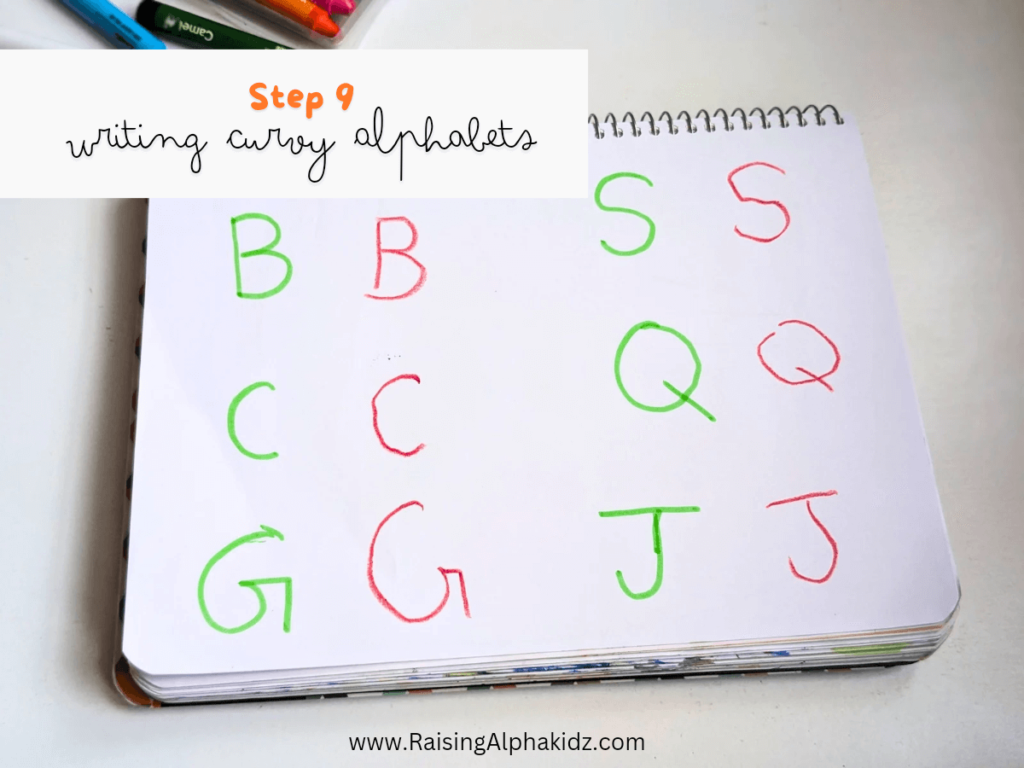
Now, let’s move on to learning to write curvy alphabetical letters. Explore tracing capital letters with curves, including Q, R, B, and C, to further develop writing skills. Alphabet tracing worksheets with curvy letters provide focused practice opportunities.
10) Writing Words
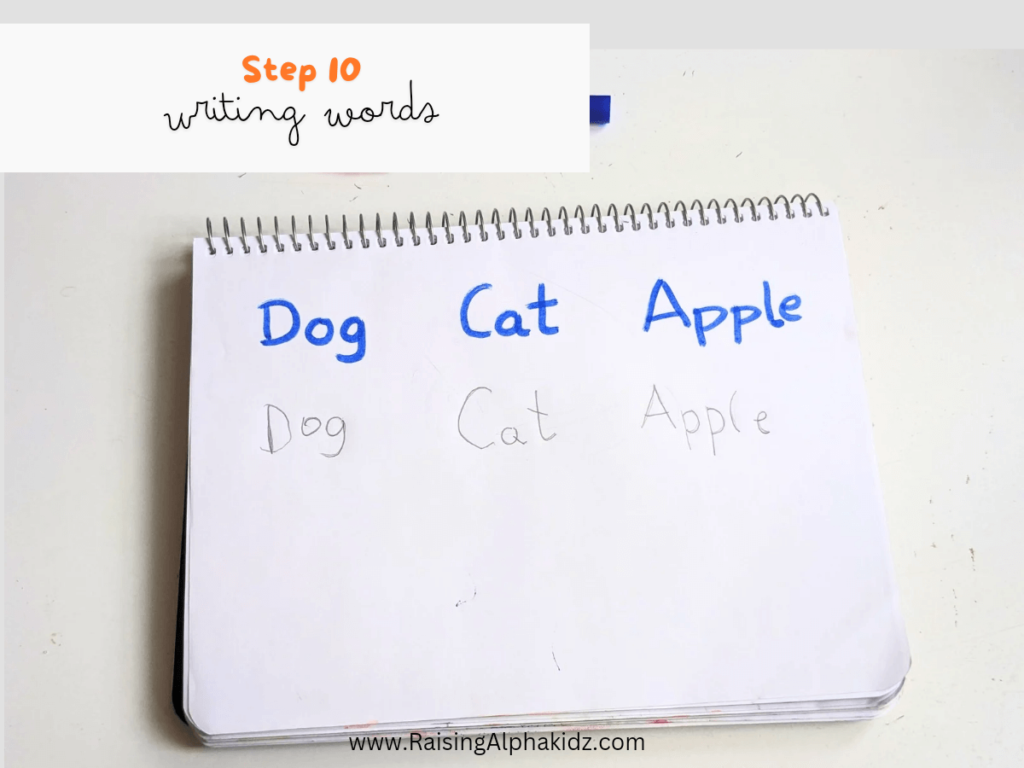
Once they become proficient at writing alphabets, we can then move on to teach kids to write words. Write small words in a notebook. Ask your child to write the words with both capital and small letters, replicating the way you have written them. Copywriting worksheets offer a platform for practicing joined letter writing in a structured way.
Difficulties in Teaching Kids To Write
At what age should a child start writing?
A child typically starts developing writing skills around the ages of 3 to 5, but the exact age can vary depending on individual readiness and exposure to writing activities.
Should a child read or write first?
Generally, it is recommended that a child learns to read before they start writing, as reading lays the foundation for understanding language and recognizing written words.
What is the Montessori method of writing?
The Montessori method of writing emphasizes hands-on learning experiences and allows children to explore writing through sensory activities, such as tracing sandpaper letters and forming letters with tactile materials.
Why can a child read but not write?
A child may be able to read before they can write because reading involves decoding and understanding written language, while writing requires the physical skill of forming letters and words.
What causes a child not to write?
Several factors can cause a child not to write, including developmental delays, fine motor skill issues, lack of exposure to writing activities, or underlying learning difficulties.
What is the right age to start writing?
The right age to start writing varies from child to child, but most children begin to develop writing skills around preschool age, typically between 3 to 5 years old.
What to do if your child refuses to write?
If your child refuses to write, it’s important to first understand the underlying reason, whether it’s a lack of interest, difficulty with fine motor skills, or other factors. Encourage writing through fun activities, provide support and encouragement, and consider seeking advice from educators or professionals if needed.
More Alphabet Related Activity
1). Learn ABC: Popscile Stick Alphabet Insert Activity
2). Feed The Monster: Alphabets Activity For Kids
Incorporating these innovative and elaborative methods into your teaching approach can be both enjoyable and rewarding for children. Remember to be patient, provide ample encouragement, and celebrate their progress along the way. With dedication and creativity, you can teach kids to write by unlocking the power of writing.
